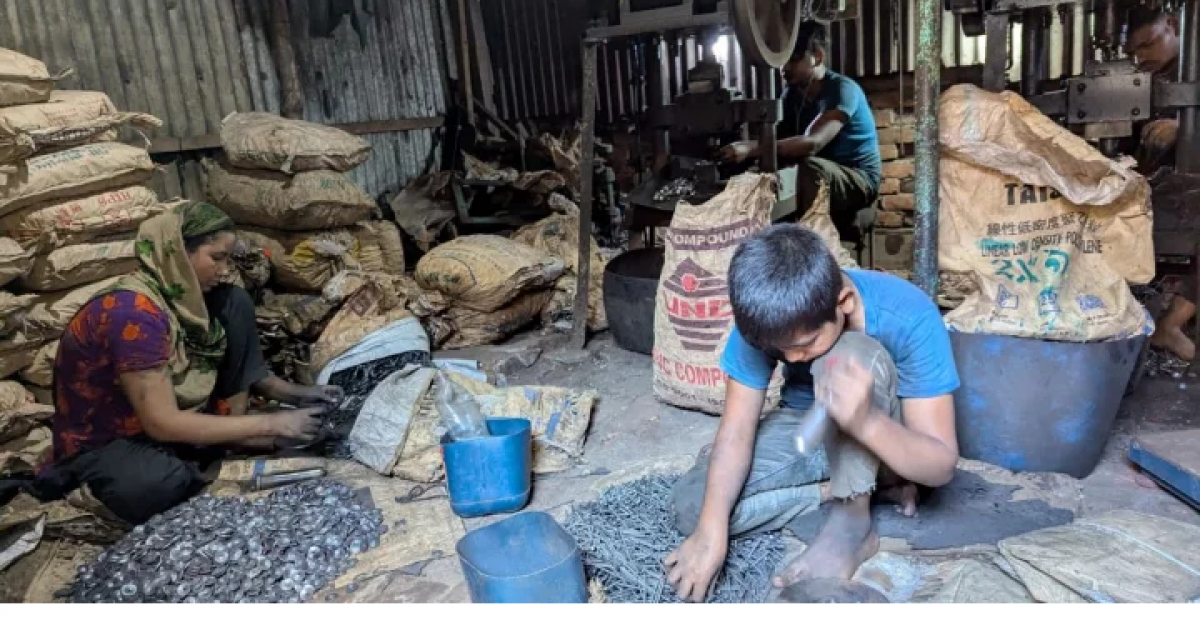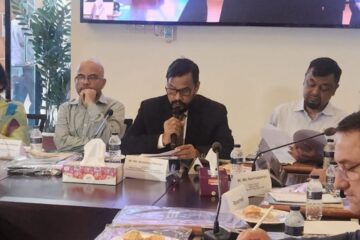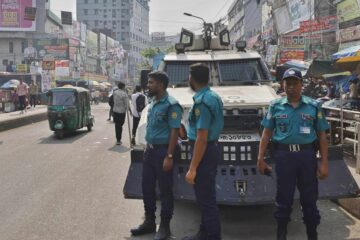Bangladesh is facing a sharp rise in child labour, toxic lead exposure, malnutrition and unsafe water access, according to preliminary findings of the Multiple Indicator Cluster Survey 2025 (MICS 2025), jointly released on Sunday by the Bangladesh Bureau of Statistics (BBS) and Unicef.
The survey, the country’s most comprehensive assessment of children and women covering nearly 63,000 households, shows that 1.2 million additional children have entered the workforce since 2019 and almost four in ten children aged 12–59 months now have dangerous levels of lead in their blood.
The findings were unveiled at the Bangladesh–China Friendship Conference Center in Dhaka by BBS Director General Mohammed Mizanur Rahman and Unicef Representative Rana Flowers.
Widespread lead exposure
For the first time, the MICS survey tested blood samples for heavy metals.
The results point to a public-health emergency: 38% of children aged 12–59 months and 8% of pregnant women carry lead concentrations well above safe limits.
Dhaka shows the highest burden, with 65% of children affected.
Lead poisoning, researchers warn, can permanently damage brain development, lower IQ and reduce future earnings.
Strikingly, the burden is highest among wealthier families: more than half of affected children come from the richest households, indicating widespread contamination in consumer products such as cosmetics, utensils, cookware and toys.
Child labour rises sharply
The survey paints a bleak picture of child protection.
Child labour has surged to 9.2%, pulling 1.2 million more children into hazardous work.
Eighty-six percent of children still face violent discipline at home.
Child marriage, while declining, remains widespread, with 47% of girls married before 18.
Birth registration also lags, with only 59% of under-fives registered and just 47% holding a birth certificate.
Unicef stressed that such practices severely undermine children’s rights, future earnings and national productivity.
According to the agency, every dollar invested in child protection yields ninefold economic and social returns.
Health progress overshadowed by setbacks
The new data reflect mixed progress.
Bangladesh has seen improvements in antenatal care, institutional deliveries, post-natal care and stunting reduction since 2019.
But several critical indicators have worsened: child wasting has risen to 12.9%, maternal anaemia remains extremely high at 52.8%, and the adolescent birth rate has climbed to 92 per 1,000 girls.
Neonatal mortality remains stubbornly high at 22 per 1,000 live births, accounting for two-thirds of all under-five deaths.
The C-section rate has reached an alarming 75% among institutional births, and only 46% of women receive early antenatal care.
Water safety declines
Access to safely managed drinking water has dropped to 39.3%, leaving more than 106 million people without safe water.
Nearly half of all water sources and more than 80% of household samples are contaminated with E coli.
Climate-related hazards affected 10.2% of water points last year, underscoring growing risks to water, sanitation and hygiene (WASH) systems.
Bangladesh is the first country to include climate-resilient WASH indicators in MICS, offering new insights into how communities protect essential water and sanitation facilities during disasters.
School enrolment high, learning weak
While around 80% of children remain enrolled in primary school, attendance falls sharply at the secondary level.
Learning outcomes remain low, with many children completing primary school without mastering basic skills.
Between 6–7% of primary-age children remain out of school.
‘Children losing their potential’
Unicef Representative Rana Flowers warned that Bangladesh stands at a critical moment.
“Declines in child marriage and child mortality show what’s possible. But lead poisoning, rising C-section rates and increasing child labour are depriving millions of children of their potential,” she said.
“We are seeing nearly a 40% increase in child labour—children out of school, trapped in poverty, and unable to escape the cycle.”
She described the lead-exposure findings as “shocking,” noting that two-thirds of affected children in Dhaka come from the wealthiest households.
“Eyeliner produced here contains up to 78% lead. You may as well eat it,” she said, warning of irreversible neurological damage.
Flowers also noted that Bangladesh’s investment in education (1.7% of GDP) and health (0.7%) remains among the lowest in the world, undermining progress.
Gaps in adolescent reproductive health are also severe; 30% of girls did not know what menstruation was when it began.
Billions in economic losses
Unicef emphasized that harmful practices such as early marriage, child labour, low birth registration and violent discipline erode Bangladesh’s long-term economic potential.
Children denied education and safe childhoods earn significantly less throughout adulthood, costing the economy billions each year.
Unicef, alongside partners including SDC, the US Government, UNHCR, UNFPA and IEDCR, pledged continued support to help Bangladesh translate MICS findings into targeted policies.
They stressed that as Bangladesh moves toward upper-middle-income status, equity-driven investments will be essential to ensure no child is left behind.



